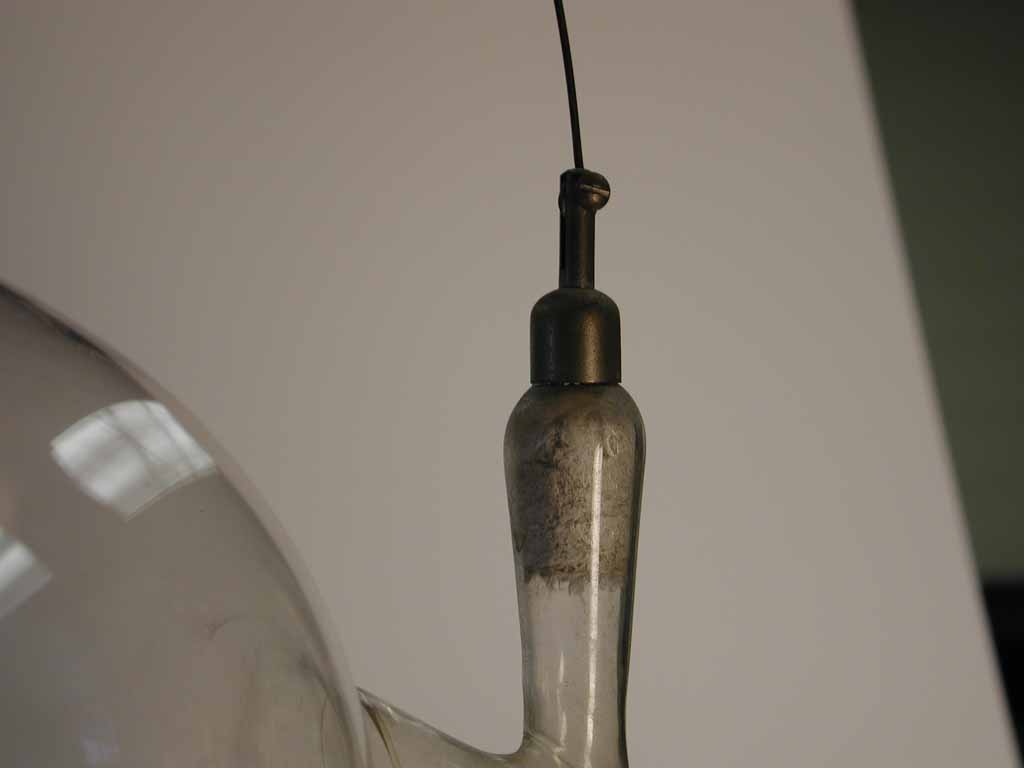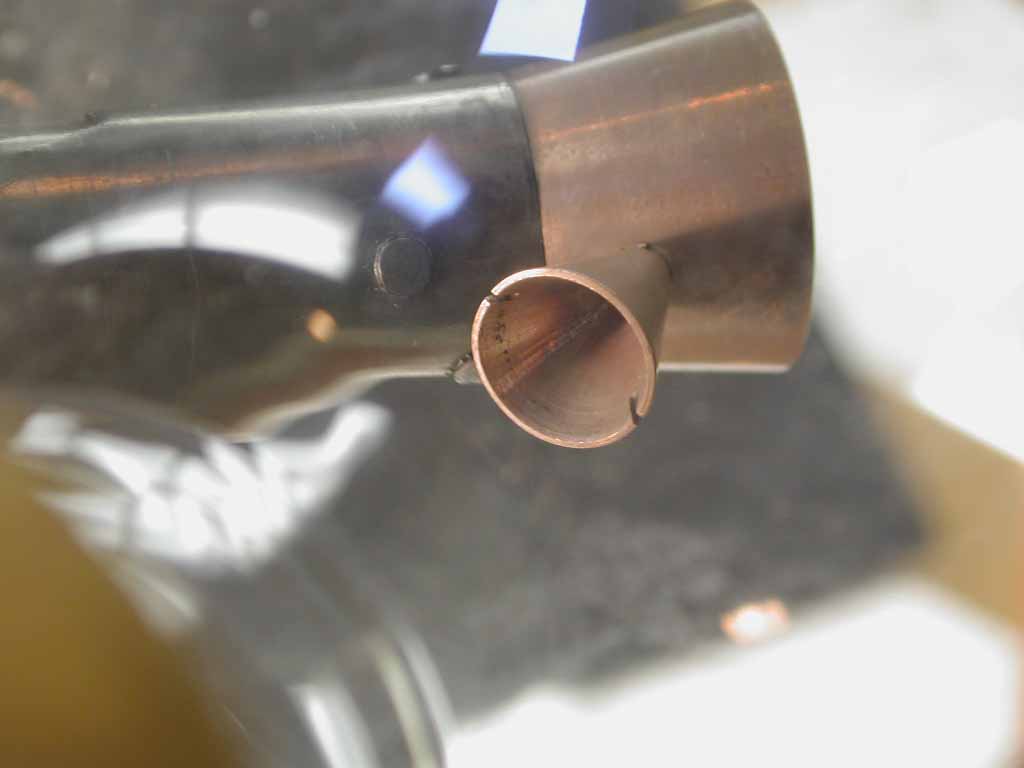 |
When the high frequency, high
voltage potential is applied across the anode and cathode, a conducting
ion path is formed in the tube between the anode and cathode. The cone
shaped piece of copper on the anticathode ensures that the anticathode
is in the voltage path. The tube is very sensitive to internal pressure
changes. Operating the tube tends to decrease the pressure in the tube
and not enough positive ions are present to produce electrons to make x-rays.
When this happens, the resistance in the tube goes up and the voltage across
the cathode and regeneration electrode builds up, and there is a spark
from the tip of the wire to the cathode. This heats up the asbestos
packed into the tube just under the metal feed-through supportng the wire.
The asbestos is permeable and has picked up gas during the manufacturing
process, which is released into the tube and the resistance increases to
an acceptable level. The gap between the wire and the cathode would need
to be adjusted for proper operation. |


